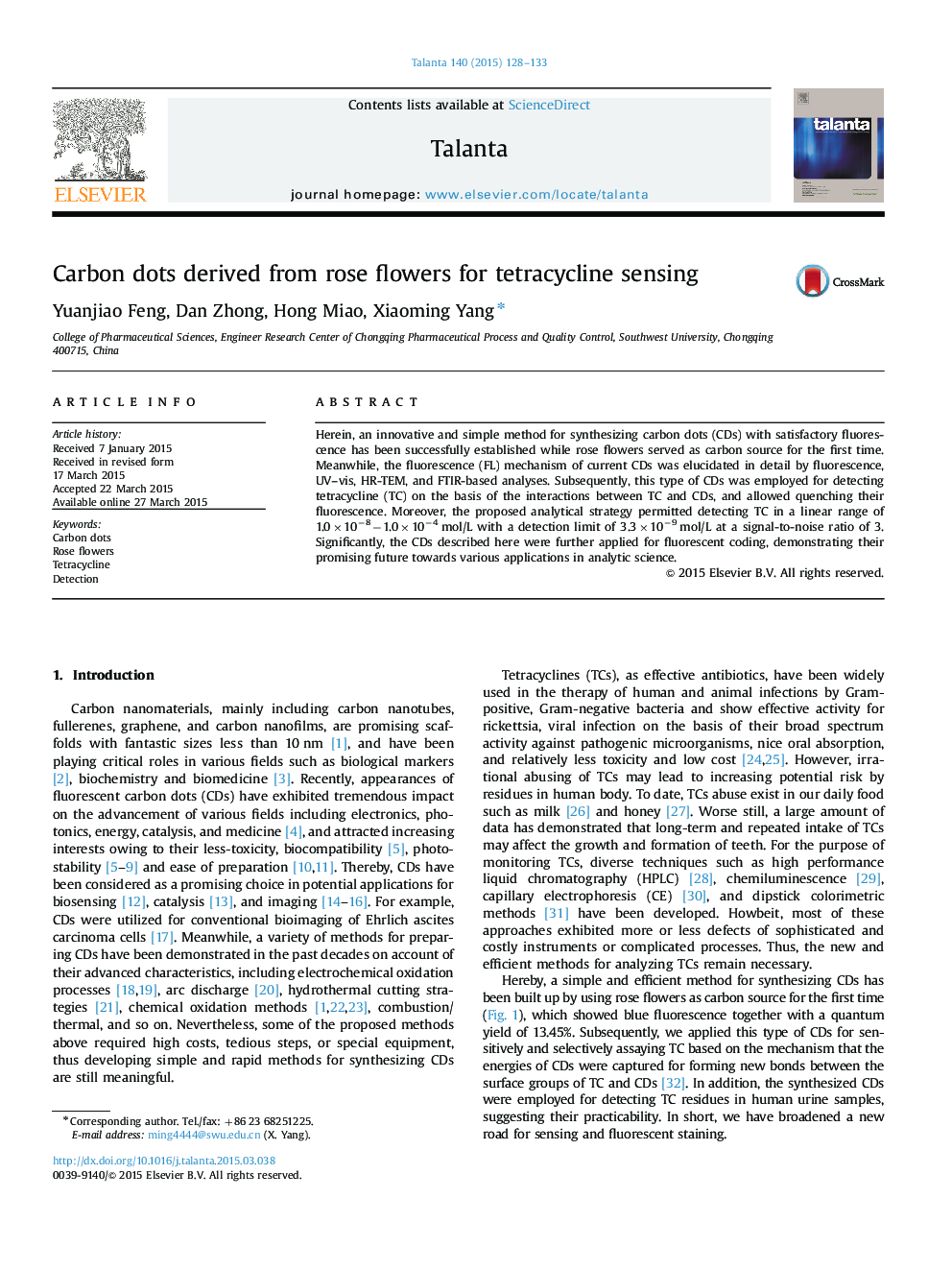| Article ID | Journal | Published Year | Pages | File Type |
|---|---|---|---|---|
| 1243068 | Talanta | 2015 | 6 Pages |
•Carbon dots derived from rose flowers were successfully synthesized.•A simple, sensitive, and cost-effective quantification of tetracycline was developed.•This strategy may broaden potential ways to assay tetracycline in actual samples.
Herein, an innovative and simple method for synthesizing carbon dots (CDs) with satisfactory fluorescence has been successfully established while rose flowers served as carbon source for the first time. Meanwhile, the fluorescence (FL) mechanism of current CDs was elucidated in detail by fluorescence, UV–vis, HR-TEM, and FTIR-based analyses. Subsequently, this type of CDs was employed for detecting tetracycline (TC) on the basis of the interactions between TC and CDs, and allowed quenching their fluorescence. Moreover, the proposed analytical strategy permitted detecting TC in a linear range of 1.0×10−8−1.0×10−4 mol/L with a detection limit of 3.3×10−9 mol/L at a signal-to-noise ratio of 3. Significantly, the CDs described here were further applied for fluorescent coding, demonstrating their promising future towards various applications in analytic science.
Graphical abstractAn innovative and simple method for synthesizing carbon dots (CDs) with satisfactory fluorescence has been successfully established while rose flowers played the role of carbon source for the first time. The CDs obtained here were employed for assaying tetracycline and served as a fluorescent probe for detecting TCs residues in human urine samples. Meanwhile, CDs were further applied for fluorescent staining.Figure optionsDownload full-size imageDownload as PowerPoint slide
